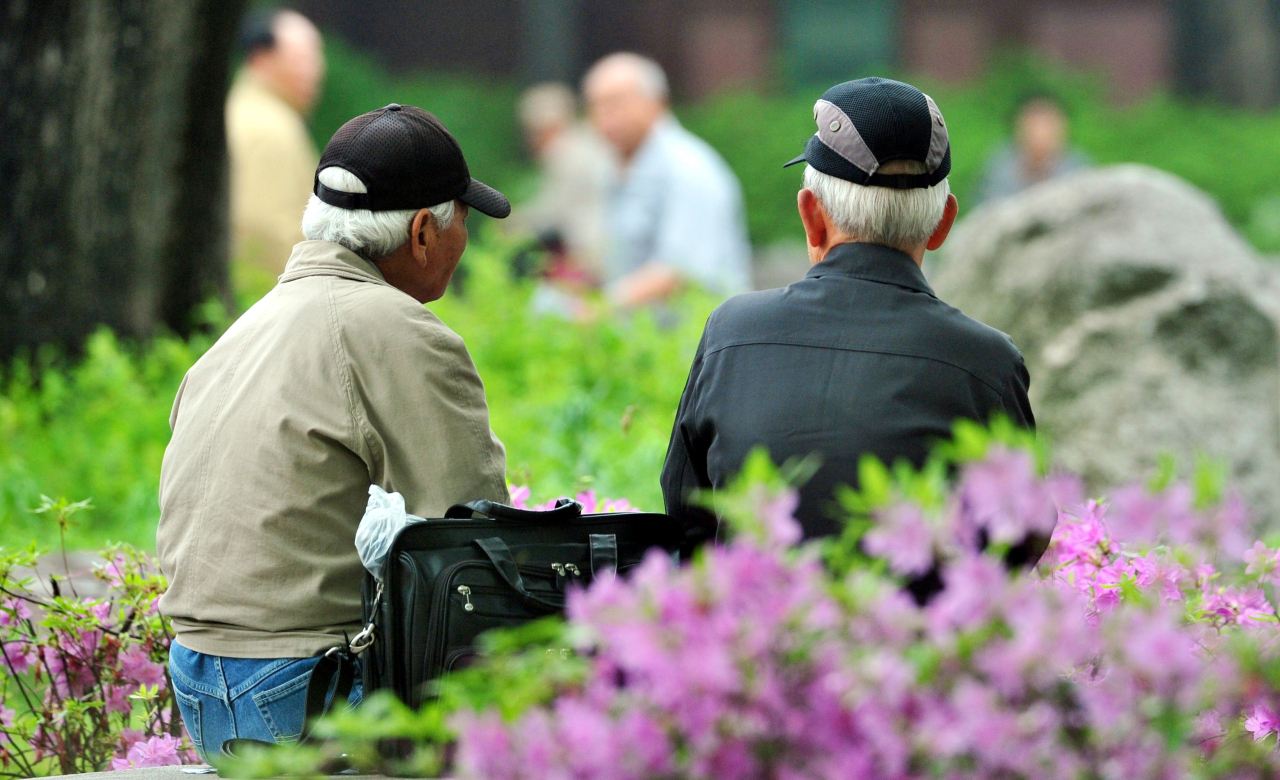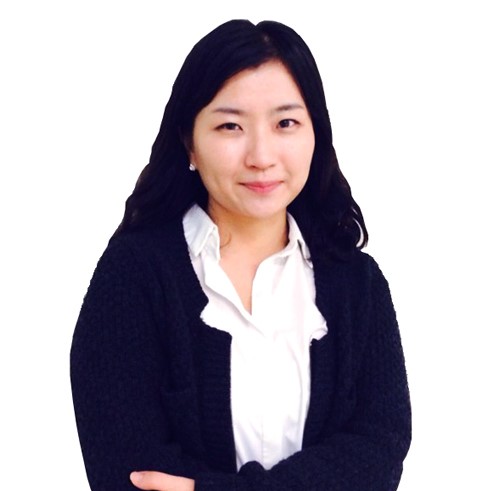National pension is a mess no one wants to fix
It’s presidential election season and none of the two frontrunners are talking about pension‘s ticking time bomb
By Park Han-naPublished : Nov. 28, 2021 - 16:26

Lee Hyeong-seok, 75, remembers when the national pension scheme was first introduced back in late 1980s as a state-backed insurance plan for post-retirement life.
He and his friends, then in their early 40s, were initially unconvinced. At that time, bank savings carried interest rates of well over 10 percent. What’s the point in chipping in a handsome amount of one’s monthly salary to the fledgling pension fund?
But persistent persuasion by a National Pension Service official led him to commit to making monthly pension contributions of around 150,000 won ($125), although he never quite understood how much help it would be decades later.
Now, Lee is glad he listened to the pertinacious NPS official.
Ever since he turned 60, he has been receiving a pension of around 500,000 won a month.
“After all, it was a good bargain for me,” Lee said, doing the math to calculate how much the pension has given him in excess of what he paid. So far, he has received about 90 million won in total benefits from his total contributions of approximately 25 million won.
The same state pension scheme, however, won’t be that generous to his two daughters, who are in their 30s and 40s and have been paying their premiums for some time now.
The elder daughter, a 43-year-old office worker, sees 400,000 won deduced from her monthly salary of some 4.5 million won. According to bills that she receives from the NPS, it is estimated that she will receive some 1.2 million won per month if she continues to make payments until she turns 60. She will start collecting the money only after she turns 65.
The younger daughter’s cost-benefit analysis of pension would be even worse, as any changes in the pension’s pay structure are likely to disadvantage younger subscribers.
“The amount my daughters are expected to receive was smaller than I thought it would be,” Lee said.
Lee’s family offers a snapshot of Korea’s pension problem: The father from the baby boomer generation benefits from the “pay less and receive more” era of the state pension, while his children are forced to accept a “pay more and receive less” reform to maintain the system as demographic and economic growth slows.
According to data released by Statistics Korea in January, the working-age population aged 15 to 64 will shrink from 37.36 million in 2020 to 17.84 million in 2067. During the same period, the population of people aged 65 and over will increase from 8.13 million to 18.27 million.
Contributions from five adults to the NPS now support each elderly pensioner, but in 45 years, the ration will be down to 1-to-1.
There have been constant calls for pension reform in order to ease the financial burdens that younger generations have to shoulder.
“Pension is the most important system to provide a stable life of all Koreans in old age. If such an important system is mismanaged, there is a possibility it will end up as the preserve of one generation,” said Yun Suk-myung, the president of Korea Pension Association.
When the pension scheme was first adopted in 1988, the premium rate was set at 3 percent of one’s income. “The rate was set way too low in order to encourage people to adopt the scheme,” he said.
The government initially aimed to raise the rate by 3 percentage points every five years but, finding it difficult to build a national consensus, it has left it at 9 percent since 1998. Instead, there has been a phased increase in the state pension age -- and the number of pensioners. The income replacement ratio for pensioners which stood at 70 percent in 1988 was down to 50 percent in 2008.
The National Assembly Budget Office estimated last year that the pension fund will turn to deficit by 2040 and will be depleted by 2054. As of end-September, the fund stands at 919 trillion won.
Radical and immediate changes should be taken in order to address this ticking time bomb, Yun said.
“In this situation, if reform is delayed, these generations (baby boomers) will receive much more than they paid and the burden will inevitably be passed on to younger generations,” Yoon said, adding that people residing in other Organization of Economic Cooperation and Development member countries pay some 20 percent of their income toward their pensions.
Yet, despite its urgency and broad impact on general public, not many politicians are bringing up the issue amid an election season.
With less than four months to go until the next presidential election, both Lee Jae-myung and Yoon Seok-youl, the presidential nominees of the ruling Democratic Party and main opposition People Power Party, have not unveiled their campaign pledges on how to overhaul the national pension scheme.
Ahn Cheol-soo, a candidate from the minor People’s Party who trails the two by a large margin, is the only one who has vowed to carry out pension reform if elected.
“Those born in 1990 and after won’t get any pension, despite having paying their premiums for their whole (working) life,” Ahn said.
“This is not just one generation’s bankruptcy. It’s a collapse of the entire national community,” he stressed, criticizing other contenders’ indifference to the matter.
As a part of the reform plan, he pledged to integrate the pool of funds for three civil service pensions, which are already bleeding losses and receiving support from taxpayers’ money, with that of the national pension scheme and reform the pay structure altogether to make it sustainable.
He and his friends, then in their early 40s, were initially unconvinced. At that time, bank savings carried interest rates of well over 10 percent. What’s the point in chipping in a handsome amount of one’s monthly salary to the fledgling pension fund?
But persistent persuasion by a National Pension Service official led him to commit to making monthly pension contributions of around 150,000 won ($125), although he never quite understood how much help it would be decades later.
Now, Lee is glad he listened to the pertinacious NPS official.
Ever since he turned 60, he has been receiving a pension of around 500,000 won a month.
“After all, it was a good bargain for me,” Lee said, doing the math to calculate how much the pension has given him in excess of what he paid. So far, he has received about 90 million won in total benefits from his total contributions of approximately 25 million won.
The same state pension scheme, however, won’t be that generous to his two daughters, who are in their 30s and 40s and have been paying their premiums for some time now.
The elder daughter, a 43-year-old office worker, sees 400,000 won deduced from her monthly salary of some 4.5 million won. According to bills that she receives from the NPS, it is estimated that she will receive some 1.2 million won per month if she continues to make payments until she turns 60. She will start collecting the money only after she turns 65.
The younger daughter’s cost-benefit analysis of pension would be even worse, as any changes in the pension’s pay structure are likely to disadvantage younger subscribers.
“The amount my daughters are expected to receive was smaller than I thought it would be,” Lee said.
Lee’s family offers a snapshot of Korea’s pension problem: The father from the baby boomer generation benefits from the “pay less and receive more” era of the state pension, while his children are forced to accept a “pay more and receive less” reform to maintain the system as demographic and economic growth slows.
According to data released by Statistics Korea in January, the working-age population aged 15 to 64 will shrink from 37.36 million in 2020 to 17.84 million in 2067. During the same period, the population of people aged 65 and over will increase from 8.13 million to 18.27 million.
Contributions from five adults to the NPS now support each elderly pensioner, but in 45 years, the ration will be down to 1-to-1.
There have been constant calls for pension reform in order to ease the financial burdens that younger generations have to shoulder.
“Pension is the most important system to provide a stable life of all Koreans in old age. If such an important system is mismanaged, there is a possibility it will end up as the preserve of one generation,” said Yun Suk-myung, the president of Korea Pension Association.
When the pension scheme was first adopted in 1988, the premium rate was set at 3 percent of one’s income. “The rate was set way too low in order to encourage people to adopt the scheme,” he said.
The government initially aimed to raise the rate by 3 percentage points every five years but, finding it difficult to build a national consensus, it has left it at 9 percent since 1998. Instead, there has been a phased increase in the state pension age -- and the number of pensioners. The income replacement ratio for pensioners which stood at 70 percent in 1988 was down to 50 percent in 2008.
The National Assembly Budget Office estimated last year that the pension fund will turn to deficit by 2040 and will be depleted by 2054. As of end-September, the fund stands at 919 trillion won.
Radical and immediate changes should be taken in order to address this ticking time bomb, Yun said.
“In this situation, if reform is delayed, these generations (baby boomers) will receive much more than they paid and the burden will inevitably be passed on to younger generations,” Yoon said, adding that people residing in other Organization of Economic Cooperation and Development member countries pay some 20 percent of their income toward their pensions.
Yet, despite its urgency and broad impact on general public, not many politicians are bringing up the issue amid an election season.
With less than four months to go until the next presidential election, both Lee Jae-myung and Yoon Seok-youl, the presidential nominees of the ruling Democratic Party and main opposition People Power Party, have not unveiled their campaign pledges on how to overhaul the national pension scheme.
Ahn Cheol-soo, a candidate from the minor People’s Party who trails the two by a large margin, is the only one who has vowed to carry out pension reform if elected.
“Those born in 1990 and after won’t get any pension, despite having paying their premiums for their whole (working) life,” Ahn said.
“This is not just one generation’s bankruptcy. It’s a collapse of the entire national community,” he stressed, criticizing other contenders’ indifference to the matter.
As a part of the reform plan, he pledged to integrate the pool of funds for three civil service pensions, which are already bleeding losses and receiving support from taxpayers’ money, with that of the national pension scheme and reform the pay structure altogether to make it sustainable.








![[KH Explains] Hyundai's full hybrid edge to pay off amid slow transition to pure EVs](http://res.heraldm.com/phpwas/restmb_idxmake.php?idx=644&simg=/content/image/2024/04/18/20240418050645_0.jpg&u=20240419100350)







![[From the Scene] Monks, Buddhists hail return of remains of Buddhas](http://res.heraldm.com/phpwas/restmb_idxmake.php?idx=652&simg=/content/image/2024/04/19/20240419050617_0.jpg&u=20240419175937)

![[KH Explains] Hyundai's full hybrid edge to pay off amid slow transition to pure EVs](http://res.heraldm.com/phpwas/restmb_idxmake.php?idx=652&simg=/content/image/2024/04/18/20240418050645_0.jpg&u=20240419100350)

![[Today’s K-pop] Illit drops debut single remix](http://res.heraldm.com/phpwas/restmb_idxmake.php?idx=642&simg=/content/image/2024/04/19/20240419050612_0.jpg&u=)